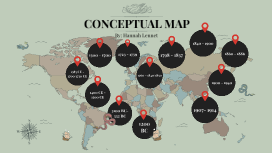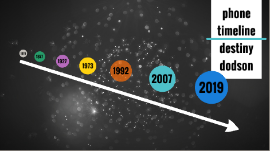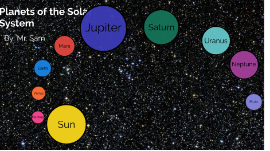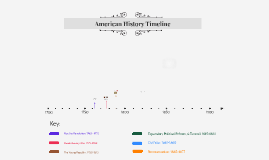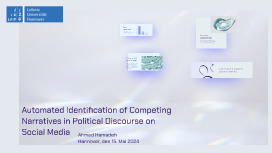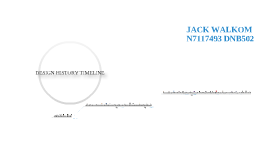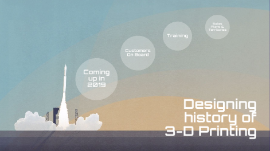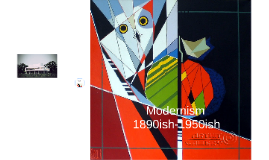design History timeline
Transcript: CONCEPTUAL MAP By: Hannah Lennet Prehistoric 1200 BC Also known as Pre-Literary history Prehistoric is the period of human history between the use of the first stone tools by hominins c. 3.3 million years ago and the beginning of recorded history with the invention of writing systems. 3 main periods: the Stone, Bronze and Iron ages- named after the main technologies used at the time. The Stone Age Stone age Began about 2.6 million years ago, when researchers found the earliest evidence of humans using stone tools, and lasted until about 3,300 B.C. Marked the first time humans started to work with metal. Humans made many technological advances during the Bronze Age. Bronze Age The Bronze Age The Iron age During the Iron Age, people across much of Europe, Asia and parts of Africa began making tools and weapons from iron and steel. Iron age Egyptian 3100 BC- 332 BC Refers to art produced in ancient Egypt between the 6th millennium BC and the 4th-century AD. During the Early Dynastic period, the pantheon of the gods was established and the illustrations and proportions of their human figures developed; and Egyptian imagery, symbolism, and basic hieroglyphic writing were created. Egyptian art SCAN ME! 1400 CE - 1500 CE The Middle Ages Much of the art in Europe during the Middle Ages was religious art with Catholic subjects and themes. The different types of art included painting, sculpture, stained glass windows, and manuscripts. 3main sections: The Early Middle Ages, High Middle Ages, and Late Middle Ages. Characteristics of medieval art include elaborately decorative patterns, bright colors, iconography, and Christian subject matter. Baroque 1585 CE - 1700/1730 CE A style of architecture, music, dance, painting, sculpture, poetry, and other arts that flourished in Europe from the early 17th century until the 1740s. Some of the qualities most frequently associated with the Baroque are grandeur, sensuous richness, drama, dynamism, movement, tension, emotional exuberance, and a tendency to blur distinctions between the various arts. Art Rococo 1723 - 1759 An artistic period that emerged in France and spread throughout the world in the late 17th and early 18th centuries. Characterized by soft colors and curvy lines, and depicts scenes of love, nature, amorous encounters, light-hearted entertainment, and youth. Art SCAN ME! More examples! Renaissance 1300 - 1700 Began in Florence, Italy Renaissance art sought to capture the experience of the individual and the beauty and mystery of the natural world. Renaissance is a French word meaning “rebirth.” It refers to a period in European civilization that was marked by a revival of classical learning and wisdom. Characteristics of the renaissance included: (1) A reverent revival of Classical Greek/Roman art forms and styles (2) A faith in the nobility of Man (Humanism) (3) The mastery of illusionistic painting techniques, maximizing 'depth' in a picture, including linear perspective, and foreshortening. (4) The naturalistic realism of its faces Characteristics Art SCAN ME! Neo-classicism 1760 - 1840/1850 Began in Rome. Neoclassicism is a revival of the classical past. The movement began around the middle of the 18th century, a time in art history when artists began to imitate Greek and Roman antiquity. Art Neo- classicism is characterized by: Characteristics 1. Symmetry 2. Unemotional telling of events 3. The simplicity of line, form, and colour 4. Balance of straight lines and geometric shapes 5. Use of science, mathematics, and natural law Romanticism 1798 - 1837 Began in France Romantic art focused on emotions, feelings, and moods of all kinds including spirituality, imagination, mystery, and fervor. The subject matter varied widely including landscapes, religion, revolution, and peaceful beauty. Influenced by revolutionary events such as the French and American revolutions. Art Realism 1840 - 1900 Refers to a mid-nineteenth-century artistic movement characterized by subjects painted from everyday life in a naturalistic manner. the term is also generally used to describe artworks painted in a realistic almost photographic way. Realism aims to interpret the actualities of any aspect of life, free from subjective prejudice, idealism, or romantic color. Art Impressionism began in the late 1800s, centered primarily around Parisian painters. Impressionists rebelled against classical subject matter and embraced modernity, desiring to create works that reflected the world in which they lived. 1860 - 1886 Characterizations of the style include: Characteristics small, visible brushstrokes that offer the bare impression of form. unblended color an emphasis on the accurate depiction of natural light Art Scan me! Modernism 1900 - 1940 Modern art is the creative world's response to the rationalist practices and perspectives of the new lives and ideas provided by the technological advances of the industrial age that caused contemporary society to manifest itself in new ways compared






